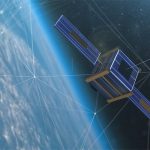The resolution lays out technical and regulatory conditions for any ESIM communicating with a GSO FSS space station within the frequency bands 17.7-19.7 GHz and 27.5-29.5 GHz.
 Delegates from around the world at the ITU World Radiocommunication Conference 2019 (WRC-19) in Sharm el-Sheikh, Egypt, have agreed to a new resolution that will boost the deployment of Earth stations in motion (ESIM).
Delegates from around the world at the ITU World Radiocommunication Conference 2019 (WRC-19) in Sharm el-Sheikh, Egypt, have agreed to a new resolution that will boost the deployment of Earth stations in motion (ESIM).
Earth stations in motion (ESIM) address a complex challenge: how to provide reliable and high-bandwidth Internet services to moving targets. They provide broadband communications, including Internet connectivity, on platforms in motion.
There are currently three types of ESIM: ESIM on aircraft (aeronautical ESIM), ESIM on ships (maritime ESIM) and ESIM on land vehicles (land ESIM). They connect people on ships, aircraft and land vehicles and ensuring their safety, security and comfort on the move.
Advances in satellite manufacturing and earth station technology have made ESIM more readily available and more practical.
When ships are at sea or aircraft cross the oceans, they are out of reach of terrestrial networks. ESIM systems can provide continuous and consistent service with very wide, or literally global, geographic coverage as ships and aircraft operate at or over almost any location.
In addition, the typical data rates currently provided by terminals operating in networks serving ESIM are around 100 Mbit/s. That is much higher, or faster, than those provided historically by mobile-satellite service (MSS).
It is no surprise, then, that the demand for radio-frequency spectrum for ESIM is increasing. For example, in 2014, over 20 000 vessels were connected via satellite. This number is expected to increase to around 50 000 vessels over the next few years.
To address the increasing need for radio-frequency spectrum for ESIM, while protecting other services, delegates at WRC-19 decided on the regulatory and technical conditions under which the frequency bands 17.7?19.7 GHz (space-to-Earth) and 27.5-29.5 GHz (Earth-to-space) can be used by the three types of ESIM communicating with geostationary (GSO) space stations in a fixed-satellite service (FSS).
The new resolution starts by stating that there is a need for global broadband mobile-satellite communications, and that some of this need could be met by allowing earth stations in motion (ESIMs) to communicate with space stations of the geostationary-satellite orbit (GSO) fixed-satellite service (FSS) operating in the frequency bands 17.7-19.7 GHz (space-to-Earth) and 27.5-29.5 GHz (Earth-to-space)
However, the resolution also cautions that the frequency bands 17.7-19.7 GHz (space-to-Earth) and 27.5-29.5 GHz (Earth-to-space) are also allocated to terrestrial and space services used by a variety of different systems, and these existing services and their future development need to be protected, without the imposition of undue constraints, from the operation of ESIMs.
The resolution lays out technical and regulatory conditions for any ESIM communicating with a GSO FSS space station within the frequency bands 17.7-19.7 GHz and 27.5-29.5 GHz, or parts thereof.
In order to strike the right balance between the innovative services that ESIM are providing and the other applications using these frequency bands, the resolution states that transmitting aeronautical and maritime ESIM in the frequency band 27.5-29.5 GHz shall not cause unacceptable interference to terrestrial services to which the frequency band is allocated and operating in accordance with the Radio Regulations and transmitting land ESIMs in the frequency band 27.5-29.5 GHz shall not cause unacceptable interference to terrestrial services in neighbouring countries to which the frequency band is allocated and operating in accordance with the Radio Regulations.
The resolution ends by instructing the ITU Secretary-General to bring this resolution to the attention of the Secretary-General of the International Maritime Organisation and of the Secretary General of the International Civil Aviation Organisation.















































































